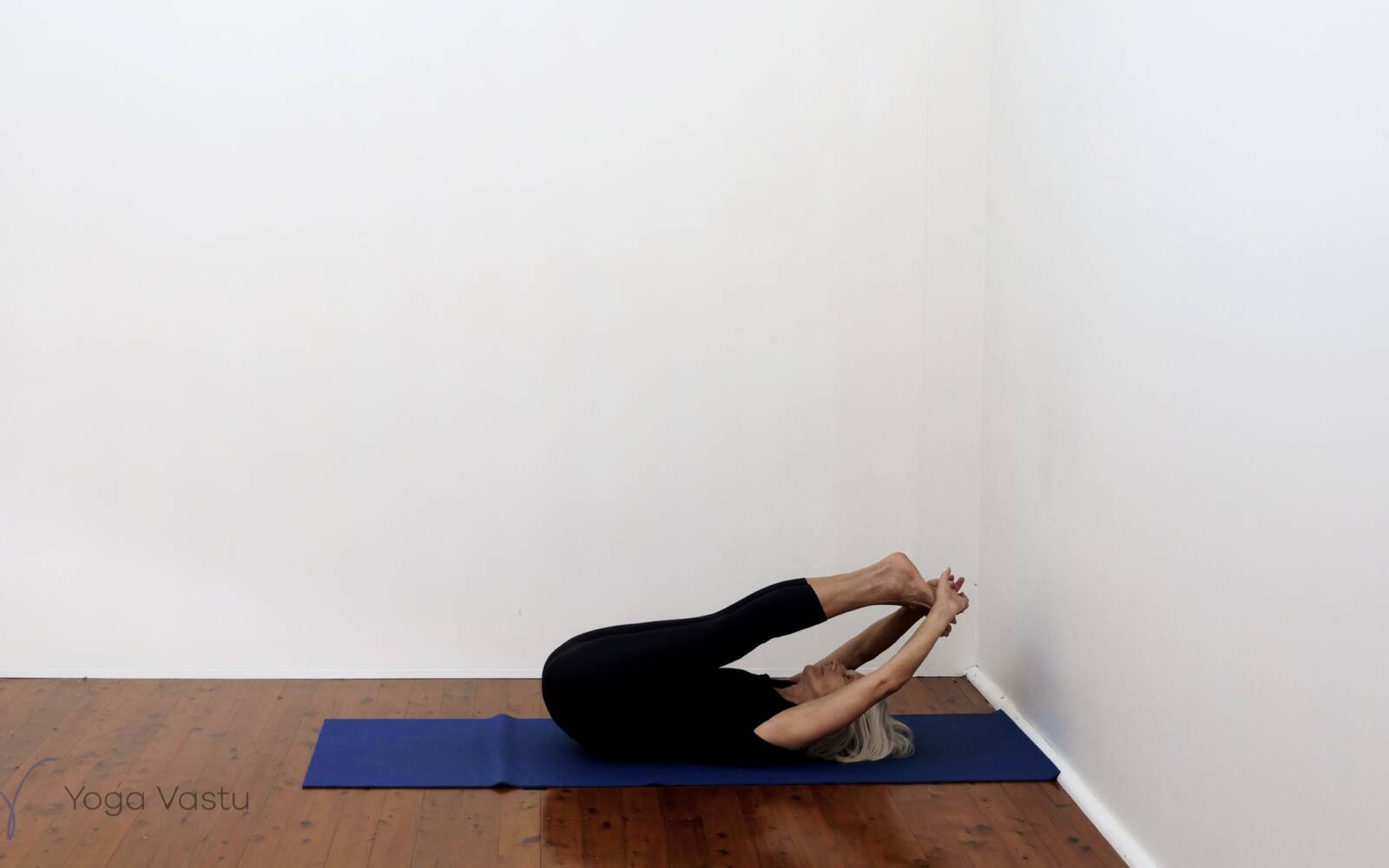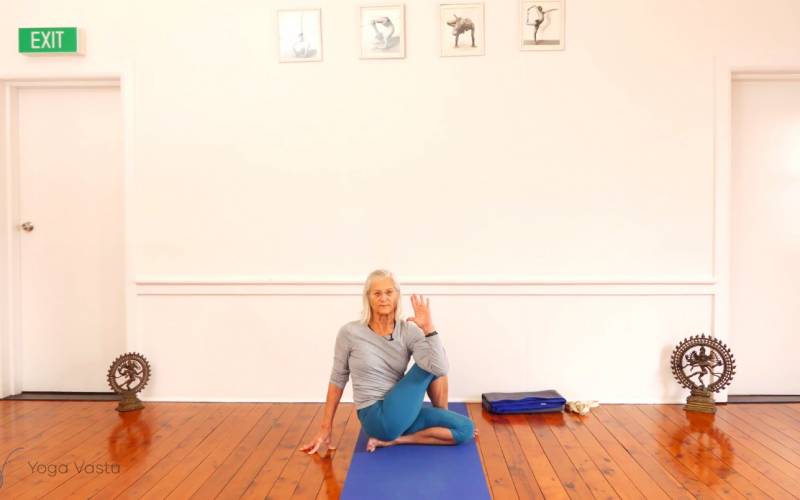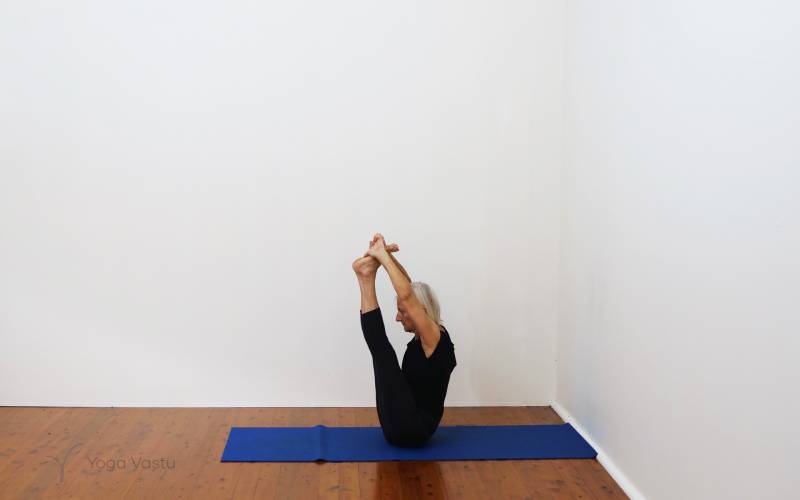How to perform Reclining Forward Bend
Lie down on your back. Lift you legs up and, keeping them straight, bring them down towards your chest. Grab hold of your feet with your hands as you would in upright Paschimottanasana.
What is Supta Paschimottanasana?
Supta Paschimottanasana, also known as Reclining Forward Bend or Supine Seated Forward Bend, is a rejuvenating and introspective pose in the practice of Iyengar yoga. Derived from the Sanskrit words “supta” meaning “reclining,” “paschima” meaning “west” or “back of the body,” and “uttana” meaning “intense stretch,” this asana offers a deep release for the posterior chain of muscles and a profound sense of surrender.
When to do it
Supta Paschimottanasana is ideally practiced in the evening or at the end of an active yoga session, as it promotes relaxation and prepares the body for restorative sleep. However, it can be incorporated into your practice at any time, based on your individual needs and energy levels. It can also serve as a nice pose to transition between different supine poses, like several variations of Supta Padangusthasana, as it allows you to release tension in your legs and, being symmetrical, realigns your hips and legs.
What are its benefits?
The benefits of Supta Paschimottanasana are numerous. Firstly, it stretches the entire posterior chain, including the hamstrings, calves, and back muscles, helping to relieve tension and improve flexibility in these areas. It also stimulates the abdominal organs, such as the kidneys and liver, supporting digestion and promoting overall well-being.
This pose has a calming effect on the nervous system, reducing stress and anxiety. As the body surrenders into the posture, the mind is encouraged to quiet down, allowing for a meditative and introspective experience. Supta Paschimottanasana is particularly beneficial for those who lead a sedentary lifestyle or spend long hours sitting, as it counteracts the effects of prolonged sitting by lengthening the spine and relieving lower back pain.
On the mental level, Supta Paschimottanasana encourages introspection and self-reflection. As you recline and let go, it creates a space for introspection and deep relaxation, allowing you to connect with your inner self and cultivate a sense of inner peace and tranquility.
In conclusion, Supta Paschimottanasana is a powerful pose in Iyengar yoga that offers both physical and mental benefits. By integrating this pose into your practice, you can experience the joy of surrendering to the present moment, releasing tension, and cultivating a deep sense of peace within. Remember to approach the pose with patience, honoring your body’s needs and limitations, and embracing the transformative potential of this rejuvenating asana.
What poses does it pair well with?
Supta Paschimottanasana in Iyengar yoga pairs well with a few complementary poses. Begin with Virasana Forward to relax and prepare. Transition into Supta Baddha Konasana to open the hips. Follow with Setu Bandha Sarvangasana to counterpose the forward bend and activate the back muscles. Pawanmuktasana can realign the spine and aid digestion. Finally, conclude with Savasana for deep relaxation. Customize the sequence to suit your needs. Listen to your body and enjoy the harmonious integration of these poses, promoting relaxation, restoration, and inner balance.



